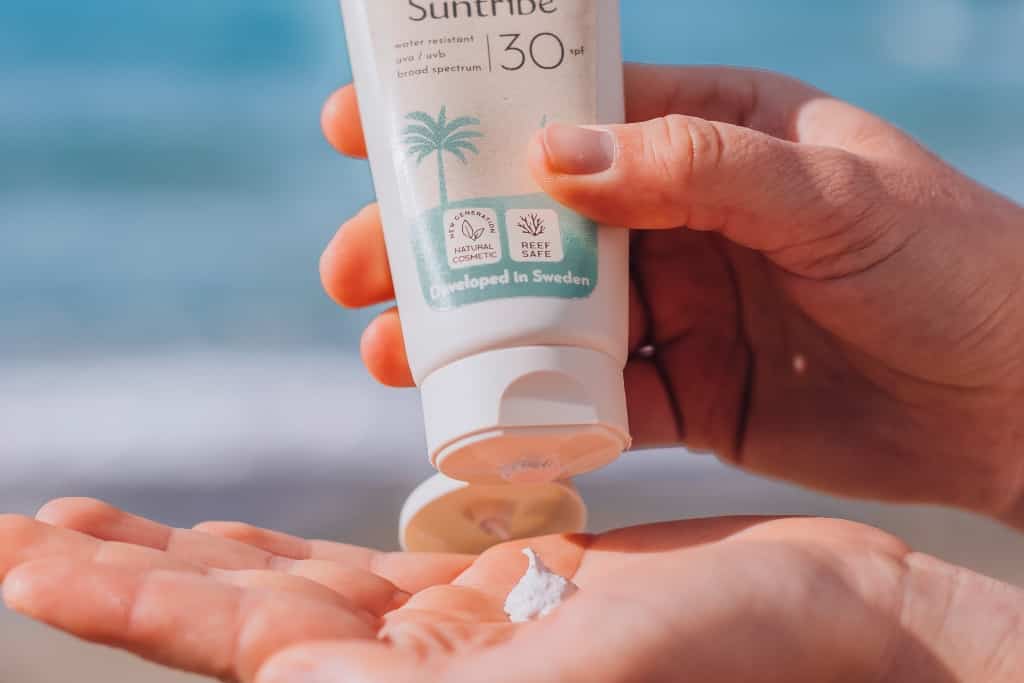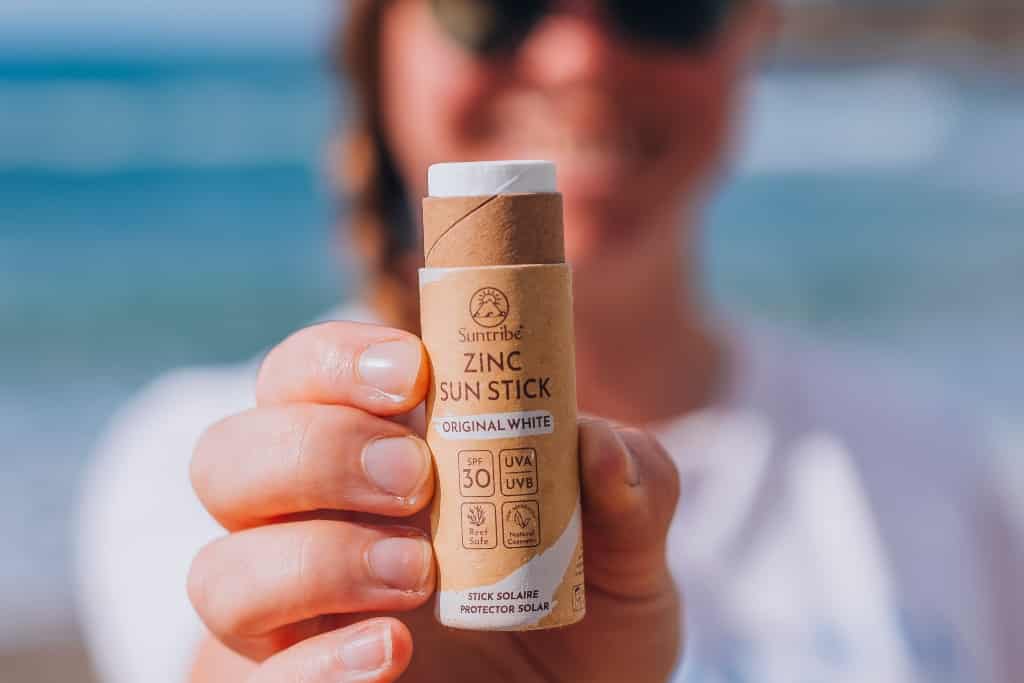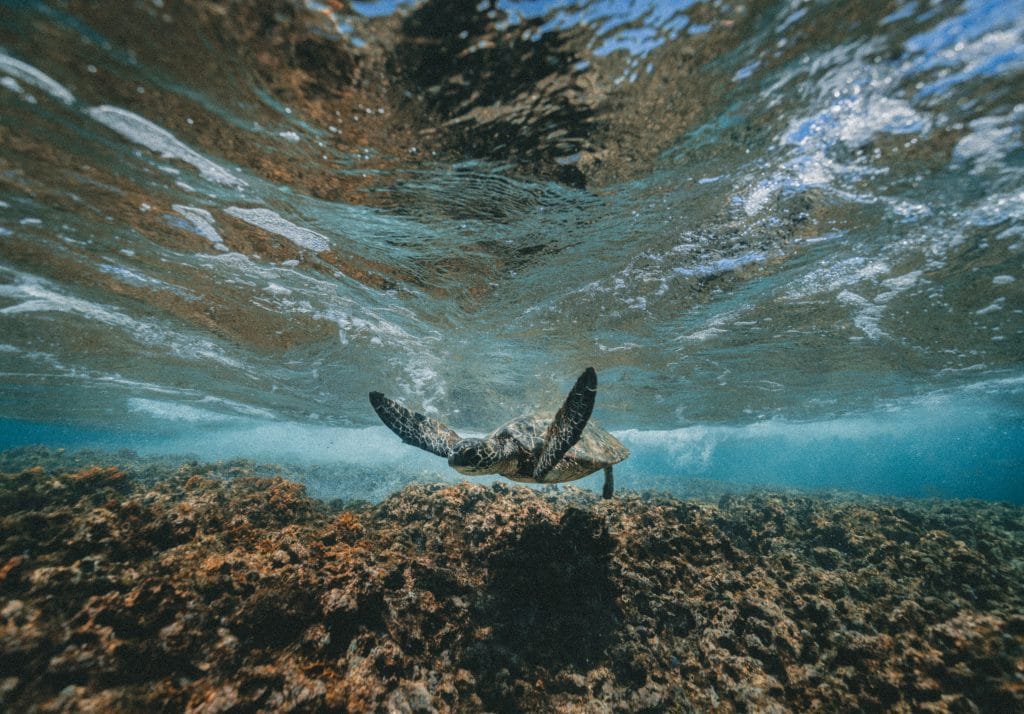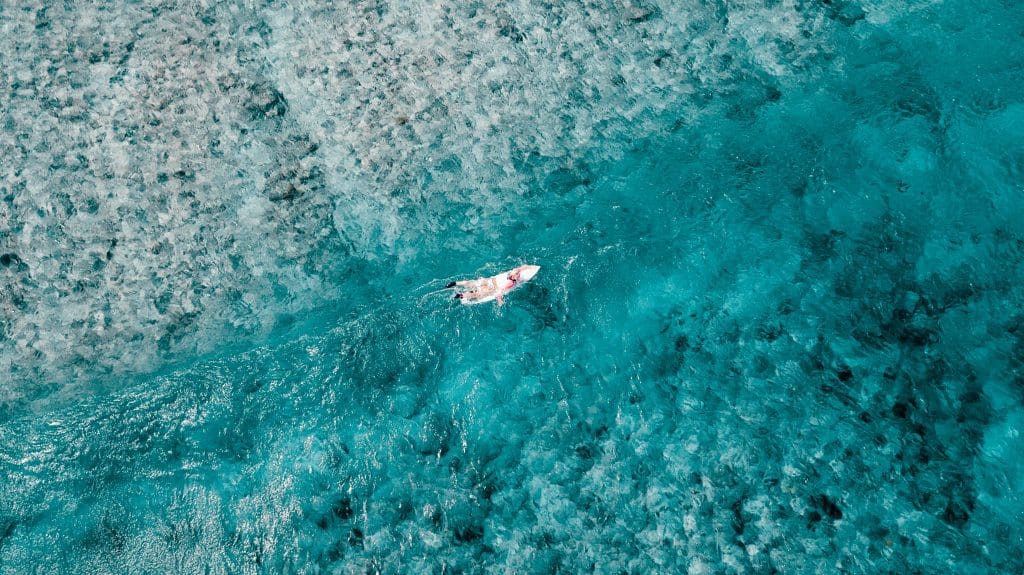PART 1 - The Problem With Chemical Sunscreens / Interview with Craig Downs

By Julia Beyer - March 1, 2022
Craig Downs, PhD, has been researching sunscreen ingredients for almost two decades and was one of the main drivers of the chemical sunscreen ban that Hawaii implemented in 2021. We have been reading his studies and using them as a helpful tool in determining which ingredients are safe to use ever since we started Suntribe. Today we are stoked to be interviewing Craig Downs about how chemical UV-filters negatively affect marine wildlife and human health.
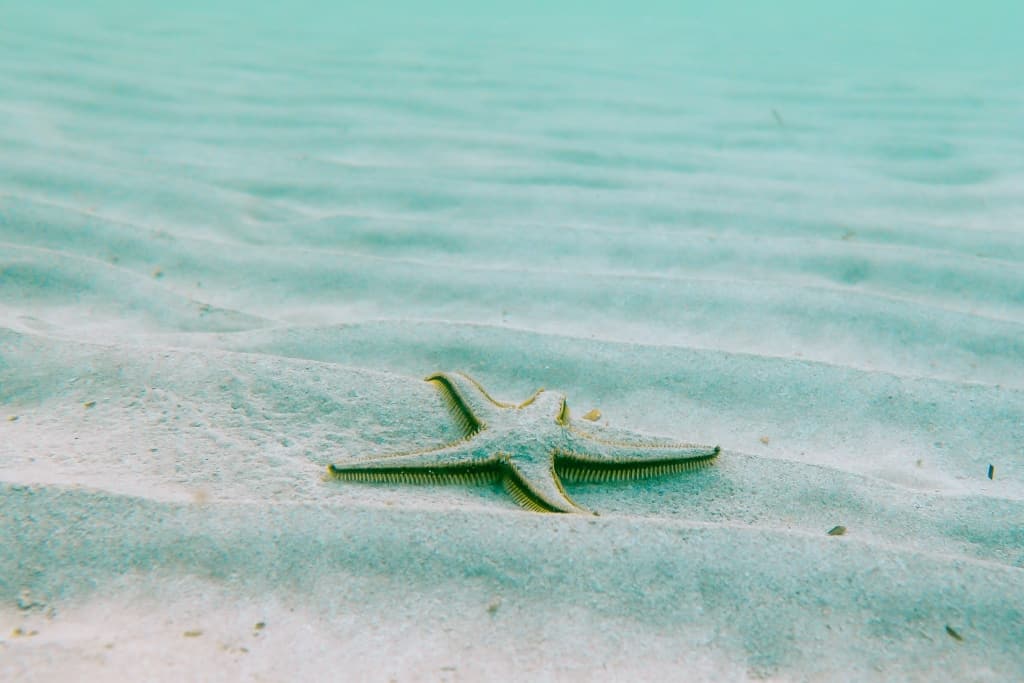
When you think back to your childhood, could you tell us about your very first memories when it comes to sunscreen?
My childhood was a long time ago. Where I was growing up in the Pacific, we really didn’t have sunscreen. Basically, my mother made us wear long brimmed hats. We would wear sun shirts even then, kind of like long sleeve cotton shirts is what we had. We’d always be out in the water swimming and snorkeling and fishing. So we just kind of covered up. We really didn’t have sunscreen lotion, they weren’t available. And it would have been nice to have on your face because I do remember getting sunburned an awful lot on the face and on your ears. A long time ago, we just didn’t have sunscreen and things have evolved over the last 50 years slowly. But I think they will quickly get better and evolve even faster in the next ten years for the sunscreen industry. So that’s really good.
There's been a lot happening for sure. Was there a moment when you thought, wow, these chemical sunscreens are really no good?
It wasn’t until our investigation of why coral reefs were dying in St. John, which is called the Virgin Islands National Park. Most of the watershed, it’s all forest. There’s no human activity. There’s legacy human activity, meaning part of that mountainside used to be sugar cane fields like 150 years ago, but it hasn’t been this way since like the 1920s.
We were very perplexed at what could be killing this coral reef. Climate change and high sea surface temperature events were not an issue back in the early 2000s. And what is interesting to note is that several studies have documented that at least 80% of the coral reefs in the Caribbean had died before the 2000s – these coral reefs were dying 50 years before the first climate change sea surface temperature events were truly observable. So the most likely cause for this demise is thought to be human pollution in all its disguises whether it be from agriculture or from housing development to industrial discharges.
Human activity would have an impact on coral reefs, but at this site where there was no human activity that we would normally associate with pollution. Nobody lived there.
So we were frustrated and it wasn’t until a Rastafari gentleman overheard a bunch of scientists complaining in the grocery store, “We couldn’t figure out what was going on and what could possibly be killing and have killed all these coral reefs.” And the Rastafarian gentleman said, “It’s the sunscreen.”
“We couldn’t figure out what [..] could possibly be killing [..] these coral reefs.” And the Rastafarian gentleman said, “It’s the sunscreen.”

And he goes, “The cruise ships will dump 3,000 to 6,000 people on a single day onto these beaches. And they all get back on their buses and ground transport, they head back to the cruise ship by 4:00 PM. If you go there at 5:00 PM, when no one’s there, you’ll just see like an oil spill. If you go and see it at sunset, it’s kind of beautiful because you see this iridescent sheen on the surface of the water.”
So we went to some of these bays. And we saw this sunscreen sheen that he talked about. We immediately went back to that grocery store, thanked him and started taking pictures of the ingredients of all these sunscreens that the grocery store was selling.
The number one ingredient that we would see was Oxybenzone. We took water samples and then we measured the amount of Oxybenzone in the water, and we were stunned by how high the concentrations were.
“The number one ingredient that we would see was Oxybenzone. We took water samples and then we measured the amount of Oxybenzone in the watere, and we were stunned by how high the concentrations were.”
– Craig Downs, PhD
When you have 600 people in the water and less than a quarter of a hectare area of water, you can imagine concentrations were really high. And they were really high. They were in the parts per million concentration because a lot of people also admit what we call sunscreen abuse. And this is a clinical term where they don’t follow the directions that are on the sunscreen bottle. They don’t put it on their skin and wait 15 minutes to allow the sunscreen to polymerize (Comment by Suntribe: This waiting time is only required for chemical sunscreen, mineral sunscreens start working the moment you apply them). Oftentimes we’ll see people in the water, spraying on sunscreen or putting it on their skin and then handing the sunscreen bottle to the next person, or throwing it on the beach and then jumping right in the water and 50 to 80% come right off their skin.
That’s where we made the first discovery of where sunscreens would be toxic. Then we did what are called laboratory toxicity studies with basically larval states of coral. And we were able to measure sunscreen concentrations in the red sea. And we found out on the Israeli side, levels were the highest we ever measured.
They were in the, again, high parts per million, but if you were to go over the Jordanian side where people are a bit more modest – you won’t find women wearing bikinis over on the Jordanian side, most of of the locals have dark skin and sunscreen can be quite expensive – we didn’t find any concentrations of sunscreen.
Then we spent the next 10 years measuring sunscreens all over the world from the great lakes in the United States to Alpine lakes in Switzerland and Germany. And we’ve gone all the way up to Norway to Alaska and both arctic poles.
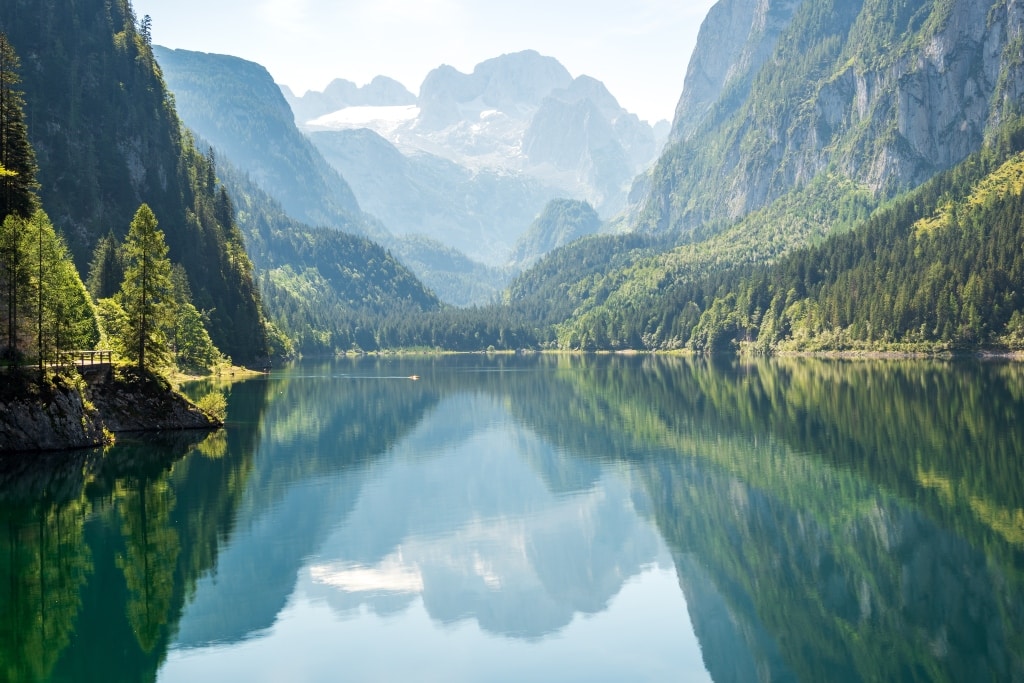
How does the sunscreen get into the water in Antarctica and in the Arctic - people are rarely bathing there, are they?
They’re rarely, rarely bathing. What we discovered over the years is that sewage is probably the biggest contributor to sunscreen pollution in coastal regions around the world.
“What we discovered over the years is that sewage is probably the biggest contributor to sunscreen pollution in coastal regions around the world.”
– Craig Downs, PhD
Sunbathing is number two, and it’s kind of the obvious one, but you have to imagine that most people when they get back to their hotel room or to their room on their cruise ship, they’ll take a shower. And that storage water gets discharged into the environment.
The other thing that we discovered was that if you apply sunscreen with Oxybenzone in it, we can detect it in your urine 20 minutes later. It’s readily absorbed. So again, sewage is the biggest source of sunscreen pollution. It’s an issue because removing those sunscreen chemicals for most wastewater treatment systems around the world is really difficult and expensive. And most governments are now saying, “Hey, it’s just cheaper for us not to even allow those chemicals to be put into the sewage.” And the way you do that is to regulate the availability or occurrence of those chemicals in personal care products.
You already mentioned Oxybenzone and the link to coral reef bleaching. And you specifically investigated the effects of Benzophenone-2 and Oxybenzone on the health of coral reefs. Could you explain to us how these two chemical reef filters affect coral reefs?
There’s more than just coral on a coral reef. There’s also fish, there’s sea cucumbers, there’s sea urchins. There’s what’s called macroalgae – large algae like Ulva. If you like sushi rolls, the algae that wrap around those sushi actually grow in tropical areas like coral reefs, and they’re very healthy to eat. They’re really rich in Vitamin B12. All of those organisms in a coral reef ecosystem can be adversely impacted by Oxybenzone. For corals, the one thing that we first noticed is how the larvae coral, which is the embryonic state, it’s the baby coral, are affected by petrochemical sunscreens. It’s a rule in toxicology that the younger you are, the more susceptible you are to the toxic effect of any chemical. This seems to be true from corals to humans and usually juveniles are a thousand times more susceptible to the toxic effects of a chemical than the adult.
“It’s a rule in toxicology that the younger you are, the more susceptible you are to the toxic effect of any chemical.”
– Craig Downs, PhD
What we noticed within two hours of exposure of these coral larvae relatively low concentrations of Oxybenzone was that they became deformed. They became horribly and fatally disfigured. That was one of the first things we noticed. Then we noticed that they started to lose color. Corals are a symbiotic organism. They have a type of algae that grows in them, and that algae is extremely susceptible to Oxybenzone. We know that Oxybenzone is toxic at concentrations as low as about 50 parts per trillion. And in other species of algae, they’re susceptible to as low as 10 parts per trillion. These are really, really low concentrations. And this makes sense because the fundamental chemical of Oxybenzone is called Benzophenone. And in the 1950s, Benzophenone was actually patented by the Monsanto chemical company as an herbicide.
The benzophenones have herbicidal properties. Their job since the fifties was to kill plants and algae. We think that’s one of the big reasons why we see in these coral reef areas a lack of seagrass and a lack of algae besides coral bleaching, because Oxybenzone is toxic to all forms of algae. What we saw with the corals, we were able to translate that information over to algae and to seagrass and macroalgae. Oxybenzone is detrimental to the building blocks of an ecosystem, what are called the primary producers. If it’s dangerous to the primary producers, you’re going to have an ecological collapse. We also found that Oxybenzone damages the DNA, and we see this same type of damage to DNA by Oxybenzone to insects, to fish and to humans.
“Oxybenzone is detrimental to the building blocks of an ecosystem, what are called the primary producers. If it’s dangerous to the primary producers, you’re going to have an ecological collapse.”
– Craig Downs, PhD
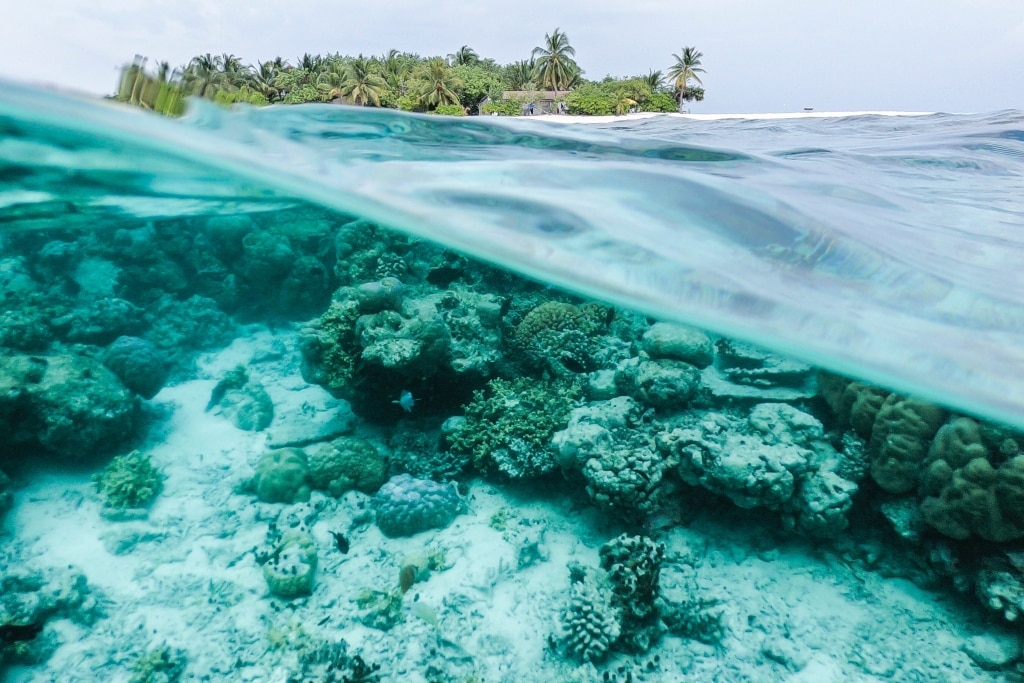
Yes, it’s quite dangerous to the juvenile stages of all organisms from humans to coral to algae. Oxybenzone we think is the most dangerous because of the birth effects. It’s associated with endometriosis in women and it’s associated with making cancer cells grow faster. Certain cancer cells grow faster because Oxybenzone is what’s called an estrogen mimic – it mimics estrogen. We really recommend that children be not exposed to it, pregnant persons be not exposed to it, even men. If you’re putting on estrogen and you’re male, that’s going to have an endocrine disruption effect that you might not really want to have. Especially if you have a type of cancer that is susceptible to estrogen, which can happen in both males and females. So it really does pose an unacceptable risk to public health.
It began in late 2015. By the end of 2015 I had over 10,000 emails from people around the world asking me personally what sunscreen I would recommend that would be safe for them and safe for the coral reef. By the middle of 2016, I had over 30,000 emails. So we were kind of exhausted trying to beautifully respond to the public. So back in 2016, we came up with a list that was defensible, that was based on the scientific literature. About the dangers of Oxybenzone, the dangers of Octocrylene.
We also had a lot of science showing that parabens, which are a type of preservative, are really unsafe for the environment. Which is kind of funny – I find it humorous because I have to laugh rather than cry at some of the horrors that we see in toxicology. Parabens accelerate skin aging. I don’t know if many people know this, but a number of dermatological studies conducted by medical dermatologists show that parabens in sunlight actually accelerate skin aging – having a sunscreen with parabens in it is just a badly formulated product. Because you can now not claim that the sunscreen protects against the effects of sun aging.
Parabens are endocrine disruptors for a lot of invertebrates. There’s methylparaben, which is one of the most commonly used parabens, is a pheromone for many types of insects or invertebrates. It can stop insects from developing into a sexually mature adult and not just insects, but crabs, shrimp and fish.
It’s all based on science and as the science increases on these different chemicals then we add. Soon we’re going to announce that a new class of chemicals have been added to the HEL-List and these are the Salicylic Acids. Homosalate and Octisalate – two commonly used UV-filters – are made from Salicydic Acid.
“Soon we’re going to announce that a new class of chemicals have been added to the HEL-List and these are the Salicylic Acids. Homosalate and Octisalate – two commonly used UV-filters – are made from Salicydic Acid.”
– Craig Downs, PhD
Salicyclic Acids are what are called teratogens. They cause birth defects at the very earliest stages of embryonic development. This is why dermatologists and your obstetricians and gynecologists will tell pregnant women not to use creams with Salicylic Acid. Octisalate and Homosalate are metabolized in the woman’s body into salicylic species of chemicals that cause birth defects.
If they cause birth defects in humans, do they cause birth defects in fish? Yes, the science bears that out. A number of groups in China and Korea, also in Turkey and Spain, have shown that Salicylic Acid is dangerous to a number of aquatic organisms. And even now in the European Union, the scientific committee that reports to EU Reach has taken Homosalate from 10% to 0.5% cause of reproductive toxicities. This is really good that the EU is recognizing the current science and is being proactive.
- Any form of microplastic sphere or beads.
- Nano Zinc Oxide and Nano Titanium Dioxide.
- Oxybenzone
- Octinoxate
- 4-methylbenzylidene Camphor
- Octocrylene
- Para-Aminobenzoic Acid (PABA)
- Methyl Paraben
- Ethyl Paraben
- Propyl Paraben
- Butyl Paraben
- Benzyl Paraben
- Triclosan
We would like to. Right now there is very, very little science being done on Avobenzone. There is a Korean scientific group that in 2021 discovered that Avobenzone is an obesity endocrine disruptor. It affects your fat.
Yes. That same Korean group discovered that Octocrylene also makes you fat. I’m just waiting for Vogue and the other fashion and lifestyle magazines to start coming out, warning people not to use Octocrylene products and Avobenzone products. All of those people that have really good healthy physiques use these, you’re going to start fighting fat gain, weight gain because you’re being exposed to these chemicals. It’s really not the best thing to use.
“I’m just waiting for Vogue and the other fashion and lifestyle magazines to start coming out, warning people not to use Octocrylene products and Avobenzone products.”
– Craig Downs, PhD
I think a number of companies have also recognized that Octocrylene is not a chemical that they want in their products anymore. I heard the German manufacturer BASF is looking to phase out selling Octocrylene. I think it’s a big victory for the cosmetic industry. It’s a big victory for conservation.
Aloha.
About Craig Downs
Craig Downs, PhD, is a renowned scientist with a passion for researching the effects of global warming and toxic sunscreen chemicals on our oceans in order to protect marine wildlife and especially corals from external stress. Craig Downs is the Executive Director at the Haereticus Environmental Laboratory – a non-profit dedicated to increasing the scientific, social and economic knowledge of natural environmental habitats in order to better conserve and restore them. He is also a guest professor at Sorbonne University in France and Chairman of the Board at the Global Coral Repository.
Want to continue reading?


